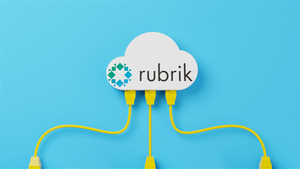Financial News
Small Language Models (SMLs) Company Evaluation Report 2025 | Microsoft, IBM, and Infosys Lead with Hybrid AI, Privacy-First Solutions, and Domain-Specific Innovation - ResearchAndMarkets.com
The "Small Language Models (SMLs) - Company Evaluation Report, 2025" report has been added to ResearchAndMarkets.com's offering.
The Small Language Model (SLM) Companies Quadrant is a comprehensive industry analysis that provides valuable insights into the global market for Small Language Model (SLM). This quadrant offers a detailed evaluation of key market players, technological advancements, product innovations, and emerging trends shaping the industry. The 360 Quadrant evaluated over 100 companies, of which the Top 26 Small Language Model (SLM) Companies were categorized and recognized as quadrant leaders.
Small language models (SLMs) are compact artificial intelligence models specifically developed to handle natural language processing (NLP) tasks efficiently and accurately, despite their smaller size. In contrast to large language models (LLMs), which typically have billions of parameters and demand substantial computational power, SLMs are designed to function effectively with fewer than 2 billion parameters. This streamlined architecture allows SLMs to offer robust language processing capabilities while greatly reducing memory requirements, energy consumption, and deployment costs.
SLMs are particularly effective in environments where computational efficiency, real-time responsiveness, and data privacy are essential. They are well-suited for use on low-power devices such as smartphones, IoT systems, and embedded hardware, where reliance on cloud-based models may not be feasible. Additionally, SLMs can be fine-tuned for specific domains, making them valuable in industries like healthcare, finance, manufacturing, law, and customer support. Their ability to deliver high-performance NLP solutions without sacrificing accuracy or efficiency is fueling continued research and investment in the SLM domain.
According to IBM, small language models (SLMs) are AI models capable of interpreting, processing, and generating natural language. These models typically range from a few million to a few billion parameters, unlike LLMs, which may contain hundreds of billions or even trillions of parameters. SLMs are more compact and computationally efficient than their larger counterparts. As a result, they require less memory and processing power, making them ideal for environments with limited resources - such as edge devices and mobile applications - or for scenarios where AI inferencing (the model's generation of a response to a query) needs to be performed offline, without relying on an active data connection.
The 360 Quadrant maps the Small Language Model (SLM) companies based on criteria such as revenue, geographic presence, growth strategies, investments, and sales strategies for the market presence of the Small Language Model (SLM) quadrant. The top criteria for product footprint evaluation included.
Key players in the Small Language Model (SLM) market are actively investing in research and development, forming strategic partnerships, and engaging in collaborative initiatives to drive innovation, expand their global footprint, and maintain a competitive edge in this rapidly evolving market.
Top 3 Companies
Microsoft
Microsoft holds a competitive position by harmonizing its SLMs with the Azure AI platform. The company's approach integrates scalable and customizable AI, effectively deploying models across edge devices while ensuring high performance. Microsoft's partnership with OpenAI enhances access to advanced language models, empowering businesses with hybrid AI systems that combine cloud-based and edge AI for seamless customer experiences. This strategy is instrumental in capturing market share across sectors like healthcare, finance, and manufacturing.
IBM
IBM's strength in the SLM market stems from its enterprise AI solutions focus, particularly in industries with high security needs. The Watson AI platform has been fundamental in delivering finely-tuned SLMs for applications in healthcare, finance, and legal sectors. IBM excels with its hybrid cloud offerings, allowing the deployment of adaptable AI models that support privacy and compliance. The company's research in model compression and security, coupled with its extensive AI governance, provides a significant edge in acquiring high-value contracts.
Infosys
Infosys has been proactive in expanding its SLM offerings to meet growing demand in domain-specific applications. The company's expertise in providing fine-tuning and enterprise-grade AI tools has allowed it to cater to industries requiring specialized models. Infosys capitalizes on privacy-first AI adoption trends, enhancing its market position through on-device solutions that minimize cloud dependency. This focus on secure processing environments ensures compliance and drives market penetration across various sectors.
Key Topics Covered:
1 Introduction
1.1 Market Definition
1.2 Inclusions and Exclusions
1.3 Stakeholders
2 Executive Summary
3 Market Overview and Industry Trends
3.1 Introduction
3.2 Market Dynamics
3.2.1 Drivers
3.2.1.1 Regulatory Compliance Driving Local AI Adoption
3.2.1.2 Affordable AI Solutions Expanding Market Reach
3.2.1.3 Advancements in Model Compression Enabling Efficiency
3.2.1.4 Industry-Specific AI Models Enhancing Performance
3.2.2 Restraints
3.2.2.1 Shallow Contextual Understanding Limits Accuracy
3.2.2.2 Lack of Multimodal Processing Restricts Functionality
3.2.2.3 Fragmented Development Tools Slowing Standardization
3.2.3 Opportunities
3.2.3.1 Self-Optimizing AI Models Enabling Continuous Improvement
3.2.3.2 Automated AI Model Optimization Via Meta-Learning
3.2.3.3 Specialized AI Infrastructure Enhancing SLM Efficiency
3.2.4 Challenges
3.2.4.1 Combating AI-Generated Misinformation and Deepfakes
3.2.4.2 Limited Scalability Restricting Generalized AI Applications
3.3 Small Language Models Market: Evolution
3.4 Ecosystem Analysis
3.4.1 Software Providers, by Parameter Count
3.4.2 Commercial (Paid) SLM Providers
3.4.3 SLM Service Providers
3.4.4 Free-To-Use SLM Providers
3.5 Supply Chain Analysis
3.6 Technology Analysis
3.6.1 Key Technologies
3.6.1.1 Model Quantization & Pruning
3.6.1.2 Knowledge Distillation
3.6.1.3 Transformer & Efficient Architectures
3.6.1.4 Federated Learning
3.6.1.5 Sparse & Low-Rank Adaptation
3.6.2 Complementary Technologies
3.6.2.1 Edge AI & Neuromorphic Computing
3.6.2.2 Few-Shot & Zero-Shot Learning
3.6.2.3 Adversarial Training & Security Mechanisms
3.6.2.4 Continual Learning & Adaptive AI
3.6.3 Adjacent Technologies
3.6.3.1 Multimodal AI
3.6.3.2 Digital Twins & Simulation AI
3.6.3.3 AI-Powered Code Generation & AutoML
3.6.3.4 Blockchain & Decentralized AI
3.7 Patent Analysis
3.7.1 Methodology
3.7.2 Patents Filed, by Document Type
3.7.3 Innovation and Patent Applications
3.8 Key Conferences and Events, 2025-2026
3.9 Porter's Five Forces Analysis
3.9.1 Threat of New Entrants
3.9.2 Threat of Substitutes
3.9.3 Bargaining Power of Suppliers
3.9.4 Bargaining Power of Buyers
3.9.5 Intensity of Competitive Rivalry
3.10 Trends/Disruptions Impacting Customer Business
3.10.1 Trends/Disruptions Impacting Customer Business
4 Competitive Landscape
4.1 Overview
4.2 Key Player Strategies/Right to Win, 2022-2025
4.3 Revenue Analysis, 2020-2024
4.4 Market Share Analysis, 2024
4.4.1 Market Share of Key Players Offering Small Language Models
4.4.2 Market Ranking Analysis
4.5 Product Comparative Analysis
4.6 Company Valuation and Financial Metrics
4.7 Company Evaluation Matrix: Key Players (Software Providers), 2024
4.7.1 Stars
4.7.2 Emerging Leaders
4.7.3 Pervasive Players
4.7.4 Participants
4.7.5 Company Footprint: Key Players (Software Providers), 2024
4.7.5.1 Company Footprint
4.7.5.2 Regional Footprint
4.7.5.3 Application Footprint
4.7.5.4 Data Modality Footprint
4.7.5.5 End-user Footprint
4.8 Company Evaluation Matrix: Key Players (Service Providers), 2024
4.8.1 Stars
4.8.2 Emerging Leaders
4.8.3 Pervasive Players
4.8.4 Participants
4.8.5 Company Footprint: Key Players (Service Providers), 2024
4.8.5.1 Company Footprint
4.8.5.2 Regional Footprint
4.8.5.3 Offering Footprint
4.8.5.4 Deployment Mode Footprint
4.8.5.5 End-user Footprint
4.9 Competitive Scenario
4.9.1 Product Launches and Enhancements
4.9.2 Deals
5 Company Profiles
- Infosys
- Microsoft
- IBM
- Meta
- Amazon Web Services (AWS)
- Mistral AI
- Arcee AI
- AI21 Labs
- Anthropic
- OpenAI
- Cohere
- Deepseek
- Krutrim
- Stability AI
- Upstage
- Alibaba Group
- Together AI
- Lamini
- Groq
- Malted AI
- Predibase
- Cerebras Systems
- Ollama
- Fireworks AI
- Snowflake
- Prem AI
- Nvidia
- Hugging Face
- Apple
- Salesforce
- Databricks
- Sarvam AI
- Sakana AI
- EvolutionaryScale
- Edgerunner AI
- Almawave
- LG
- H20.ai
- Nous Research
- Rhymes AI
- Refuel
- EleutherAI
For more information about this report visit https://www.researchandmarkets.com/r/r13mwi
About ResearchAndMarkets.com
ResearchAndMarkets.com is the world's leading source for international market research reports and market data. We provide you with the latest data on international and regional markets, key industries, the top companies, new products and the latest trends.
View source version on businesswire.com: https://www.businesswire.com/news/home/20250911870772/en/
Contacts
ResearchAndMarkets.com
Laura Wood, Senior Press Manager
press@researchandmarkets.com
For E.S.T Office Hours Call 1-917-300-0470
For U.S./ CAN Toll Free Call 1-800-526-8630
For GMT Office Hours Call +353-1-416-8900
More News
View More





Quotes delayed at least 20 minutes.
By accessing this page, you agree to the following
Privacy Policy and Terms Of Service.



